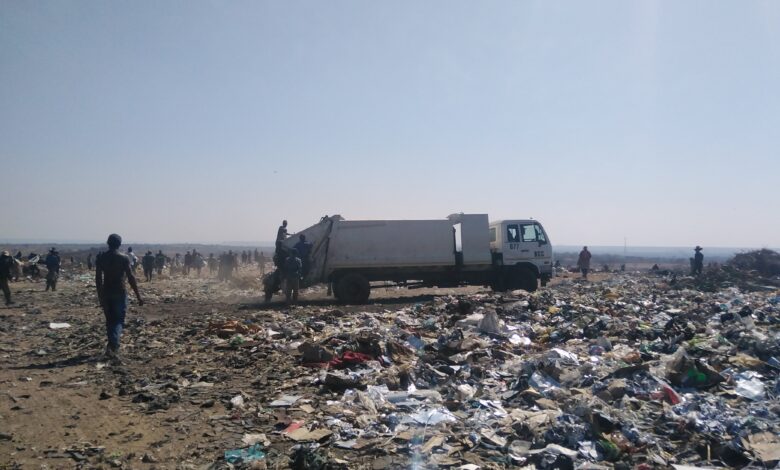Poverty drives young women into waste picking

The majority of the female waste pickers at the Richmond Landfill site popularly known as Ngozi mine were forced into the trade due to poverty, a baseline survey conducted by the Matabeleland Institute for Human Rights (MIHR) has revealed.
The baseline survey targeting female waste pickers titled Challenges faced by Bulawayo female waste pickers revealed that 53 percent of the total respondents surveyed were aged between 18 and 35 years while 47 percent were above 36 years.
“Of the majority of female waste pickers interviewed, 63 percent said they were in waste picking due to poverty, whilst 37 percent said because there was no other employment they can do. The evidence data shows that waste picking whilst not a preferential job for all the female waste pickers, has become a resilience strategy as they use it to alleviate poverty and as an alternative employment option,” said MIHR.
MIHR said waste picking, whilst not a desirable job for the waste pickers, is essential for poverty alleviation, livelihood sustainability, and the protection and promotion of fundamental human rights and freedom.
They said the survey also indicated that female waste pickers are living within the poverty bracket.
“The survey established that the majority of the female waste pickers, 72 percent make between US$1 and US$5 per week whilst 21 percent make between US$6 and US$10 per week, only 7percent make between US$11 and US$20 per week.”
“From the data collected, it was established that 70 percent of the female waste pickers earn less than US$20 a month from waste picking. Generally, nearly all-female waste pickers 95 percent earn less than US$50 a month from their waste picking enterprise,” they said.
MIHR added, “The data collected on waste earnings reveal that generally most female waste pickers are living within the poverty bracket. Juxtaposed with the analysis of family size, most female waste pickers survive in far less than the US$1.25 a day benchmarked in sustainable Development Goals (SDG).”
The Institute also added that for the majority of female waste pickers, waste picking is their sole income.
“The study established that for most of the female waste pickers, waste picking is their only sole income 89 percent whilst a paltry 11 percent have other alternative sources of income. The alternative sources of income vary ranging from hairdressing (3percent), Brewing/selling beer (3percent), selling vegetables (1 percent), selling chicken cuts (1percent), selling chips and drinks (1percent), and running a small tuckshop (1percent),” they said.
MIHR said the dependency on one sole source of income that does not meet their basic financial needs further exposes the female waste pickers to adverse poverty and worsens their vulnerability to human rights violations.
“Their resilience levels are thus very low due to lack of income diversification,” they said.
The survey also revealed that the majority of the female waste pickers complained that the money that they are paid by waste buyers is too insignificant to meet their basic needs.






